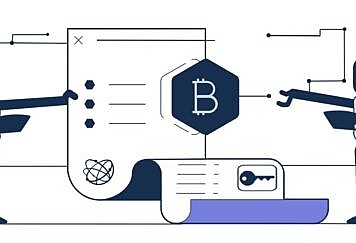Ethereum 2.0 seems to have grabbed people’s attention the same way SegWit for Bitcoin Core did. Everyone from small-time investors and cryptocurrency enthusiasts to whales and blockchain developers is interested. It’s a major revamp and to call it anything less would be disrespectful. So, what’s it all about?
Ethereum 2.0 is commonly abbreviated as Eth2. In a nutshell, Eth2 aims to speed up the Ethereum network even more while making it more scalable. These are structural and design-based changes in the main framework. You can track the overall network stats on the special Ethereum2 block explorer.
Scalability
Eth2 will introduce “sharding”. It’s beyond the scope of this article to cover the technical details of sharding. Suffice it to say that sharding simply means dividing the whole network into multiple shards. Each shard will be equipped with the bandwidth to handle transactions and implement all Ethereum-related features and accessories such as smart contracts.
This will increase the efficiency of the network. The whole work of transaction confirmation that drives any blockchain will also be split among these shards, making the process faster, more secure, and more efficient.
Apart from sharding, other technological improvements will improve the network’s efficiency. After the upgrade to Eth2 is complete, the Ethereum network will be able to handle 10,000 transactions per second (vs. the 30 per second right now).
Eth2 will make the Ethereum ecosystem more scalable.
Environment-friendly approach
Ethereum currently consumes a country’s worth of power (44.5 TWh annually). This is mainly due to people mining using expensive GPUs. Although not nearly as much as Bitcoin mining consumes (which is 114 TWh annually), but still considerable.
There are two popular types of consensuses on blockchain: Proof of Work (PoW) and Proof of Stake (PoS). In a PoW environment like BTC or current Ethereum, miners need to do heavy computations to validate blocks. This costs the world a great deal of electricity.
Eth2 will make Ethereum transitioning to PoS from PoW. In a PoS system, you cannot mine Ethereum. You can own it and stake it. Staking is like freezing your funds to support the development. Staked Eth (current requirement is to stake at least 32 ETH – $80k+ right now) will allow stakers to validate blocks based on random job assignment. Thus, the work of validating blocks will go on while mining Eth will be a thing of the past.
Many people are already staking as this segment of Eth2 is already live. Note that staking is already practiced in several other popular crypto ecosystems such as Cardano or Tron (called freezing).
This is a more environment-friendly approach for maintaining a blockchain.
Security
PoS systems require fewer validators. As a result, system security also increases.
Eth2 will make sure the network of validators is uniformly decentralized to further improve blockchain security.
Difference between Ethereum Classic and Ethereum 2.0
Here are the major differences between Ethereum Classic (ETC, not Eth1) and Eth2:
- Eth2 is Proof of Stake. ETC is Proof of Work.
- The monetary policy of Eth2 is fixed, whereas it’s variable in ETC.
- The database in Eth2 is fragmented, whereas it’s replicated in ETC.
- Eth2 will arguably have much more efficient and faster transactional, processing, and development prowess than Eth1 and ETC.





